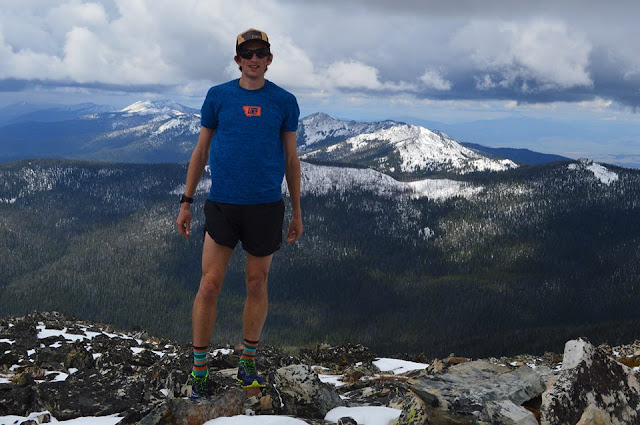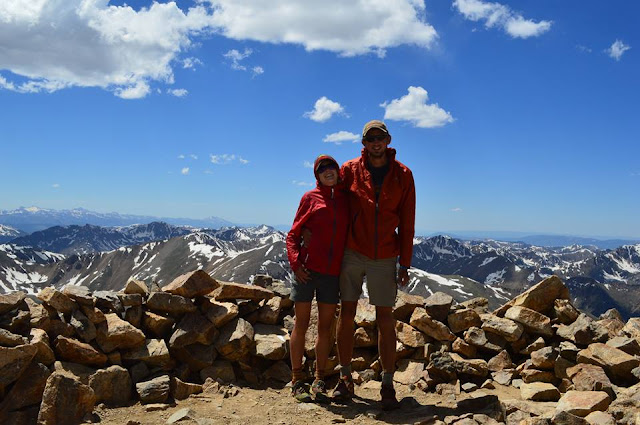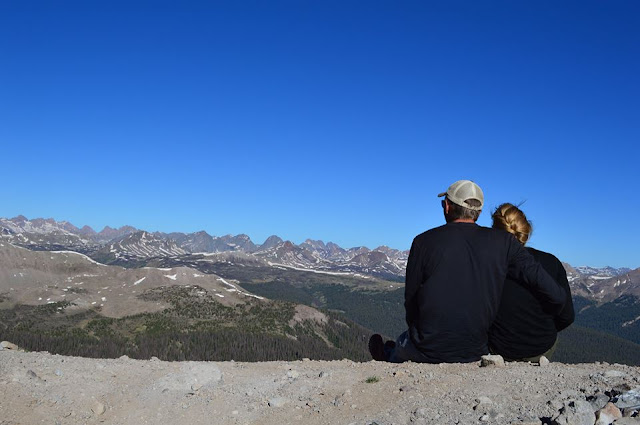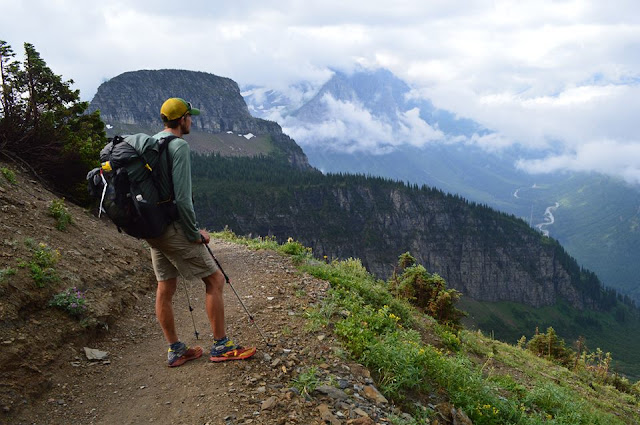 |
| On top of Ch-Paa-Qn. The highest point in the Reservation Divide. Photo: Forrest |
Forrest Boughner moved to Montana almost two years ago from Flagstaff. Since then he has established himself as one of the fastest trail runners in Montana recently winning the Bitterroot 10 miler and placing 2nd at Pengelly Double Dip. Forrest also has had success outside of Montana. He placed top American at the 2011 Mercedes 1/2 Marathon in Birmingham, AL, 8th place in the US Snowshoe National Championships in both 2015 and 2016 and placed 5th in the 2015 US Sky Running Series for the Sky Distance. Aside from running, Forrest works full time at Runners Edge and leads trail running classes a few times per week. When he moved to Montana, Forrest created the Montana Mountain Project to learn the history and topography of the Treasure State. Discover more about Forrest in this MTC interview.
I grew up at the base of a 12,000’ mountain in Flagstaff, AZ. My bedroom window looked up at the top of one of the peaks, and from an early age my parents had my brother and I out in the woods camping, hiking, backpacking, and building tree forts. After returning to Flagstaff after running at Birmingham-Southern College I had a new appreciation for mountains. Mountains out west are just plain big. I started spending less and less time running roads, and more time running the mountain trails around town. My then girlfriend, now wife, Sara and I then decided to quit work and hike the Continental Divide Trail because of the remote mountain experience along that route. After that we ended up in Missoula and are loving the great outdoor atmosphere of Montana.
 |
| On top of 14,433′ Mt Elbert. The highest point on the Continental Divide in the US. Photo: Jack DaSilva |
After growing up in Arizona I know a lot about the geography, culture, and biodiversity of Arizona, but not much about Montana. I started formulating the idea of a Mountain Project to help push the boundaries of where I explore and discover what Montana is all about. According to Montana.gov there are 64 mountain ranges in Montana. I am going to summit the highest point in each range between January 1st 2016 and December 31st 2020. For every mountain I try to find some interesting story, nugget of history, or unique tidbit that pertains to each range to enhance my outdoor experience and then share that experience on my blog. I started this project January 1stso I have not needed too much additional inspiration to continue yet, but I do get more excited when I talk to people who have been in various ranges that we don’t hear much about in Missoula, like the Sweetgrass Hills, or the Crazy Mountains, and they share tales of a fun escapade or specific route. It’s already been a great experience as a way to listen to stories from others about their experiences in different ranges.
 |
| Looking down on John Fiore as we attempt to summit McDonald Peak in the Missions. We were forced to turn back 200 feet from the summit. |
Of the 64 mountain ranges in MT, which mountain ranges are you most excited to ascend and explore?
 |
| On the top of East Saint Mary’s with Sara in the Missions |
What are 1 or 2 of your favorite mountain trails and why?
In Montana my favorite thus far is probably the trail/route to Snowshoe Peak in the Cabinet Range from the North Fork of the Bull River. Down low it feels like a rainforest, but pops out onto an incredibly blue lake before climbing up some scree and boulder fields. You get a little bit of everything special on that route without seeing a single person.
Describe a perfect day for you.
 |
| The start of a perfect day. At 12,600′ on the Continental Divide in ‘The Window’ near Silverton, CO. |
What role do you think runners can play in preserving, protecting and connecting others to nature?
I think the biggest potential for the role of preservation within trail running, and mountain running in particular, is that people are able to understand through pictures and stories where legs can take you. And with more people heading out in the mountains, more images come back that inspire recreation, and preservation. Mike Foote and Mike Wolf’s Crown Traverse serves as an excellent example of what runners can do to draw attention to the beauty of protected areas, and demonstrates what runners (very talented runners) are capable of. Every adventure like the Crown Traverse, or Jimmy Grant’s Wilderness Project, help bring awareness of special, remote protected places in Montana right to someone’s facebook and instagram feeds, which, for better or worse, is where to reach a majority of people.
 |
| One of our first trips exploring Montana. In Glacier NP. Photo: Sara Boughner |
At the completion of your project how do you think this experience will change you?
What inspires you?
If you could only speak one word today, what word would that be?
 |
| With Micah Drew on the top of Butte Cabin Ridge, the highest point in the John Longs, and unfortunately named because it is very much a peak, not “just a ridge.” |
If you had unlimited resources how would you live your life?
 |
| Looking down from the ridge to Hunchback Mountain outside Silverton, CO. |
Thank you Forrest for all that you do! The unique ideas and enthusiasm for exploration you bring to the running community are appreciated.
 runwildmissoula.org >>
runwildmissoula.org >>